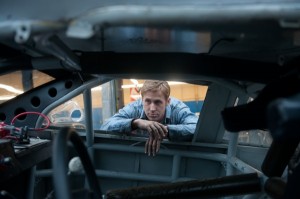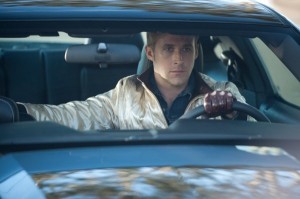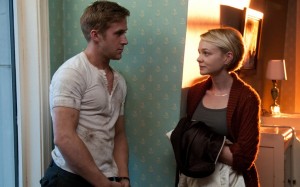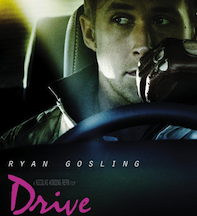THE OBJECT OF CRITICS’ AFFECTION
It boils down to this: Drive is a decent film, but I find the critical adoration being heaped upon it as bordering on reactionary.
It’s fun to watch a team play in its throwback uniforms one game each year, and yes, Drive’s combination of sun-tinged neo-noir, eye-contact chemistry, gear grinding chases, and silent leading man charisma makes chilling entertainment. But ever since its release at Cannes this May, the real attraction has been as a “man, they don’t make them like they used to” rallying point for filmmaking puritans, those who believe every good film was made before 1977 and see the current dominance of chaos cinema as a shooting offense.
 These champions see the stripped-down action of Drive as a welcome course correction to that foreboding moment when Michael Bay was given a camera, possibly by Lucifer. As such there is a rush of hype to bill this Nicolas Winding Refn film as the future. In truth it is the opposite – a leather-glove grip on the past.
These champions see the stripped-down action of Drive as a welcome course correction to that foreboding moment when Michael Bay was given a camera, possibly by Lucifer. As such there is a rush of hype to bill this Nicolas Winding Refn film as the future. In truth it is the opposite – a leather-glove grip on the past.
Drive shares a number of plot points with one of the best examples of chaos cinema, Tony Scott’s Man on Fire. A loner with a dark past finds his humanity through his surprise affection for a mother and child. When the poisonous vines of the underworld threaten the family, he fights nocturnal urban warfare to defend (or avenge) them. In Man on Fire, it’s a former CIA assassin in Mexico City.  In Drive, it’s a mechanic and stuntman (Ryan Gosling) who drives getaways through the tangled Los Angeles streets at night.
In Drive, it’s a mechanic and stuntman (Ryan Gosling) who drives getaways through the tangled Los Angeles streets at night.
Yet for all of its dream-like visual elegance and lean editing, Drive doesn’t have a lot to say. It attracts only the vague label of “existentialism” that often finds its way to quiet movies in which no one bothers to name the main character. It doesn’t match the visual fever of Scott’s film, nor its moral provocation, nor its critique of the American view of the Third World, and not enough its aching heart.
I’ve written myself into a corner, because there is much about Drive to recommend. Refn’s hypnotic glaze simmers in the classic noir motif of a man against his fate in the indifferent city.  Gosling makes the silence of the driver radioactive, and Mulligan enwraps years of suffering into a simple twitch of a lip. But as the film moves from cold style to heated violence, a rising cartoon tone undermines the alienated urban drama coming before. Not only does everyone turn out to be a killer – they all turn out to be experts at it, as if stabbing were passed down over firelight from father to son. Drive never quite decides whether it wants to be Taxi Driver or Dirty Harry, and is the less for its indecision.
Gosling makes the silence of the driver radioactive, and Mulligan enwraps years of suffering into a simple twitch of a lip. But as the film moves from cold style to heated violence, a rising cartoon tone undermines the alienated urban drama coming before. Not only does everyone turn out to be a killer – they all turn out to be experts at it, as if stabbing were passed down over firelight from father to son. Drive never quite decides whether it wants to be Taxi Driver or Dirty Harry, and is the less for its indecision.
kevinbowen @ stageandcinema.com
Drive
rated R
opens nationwide September 16

